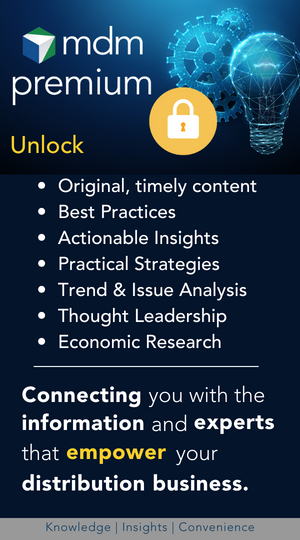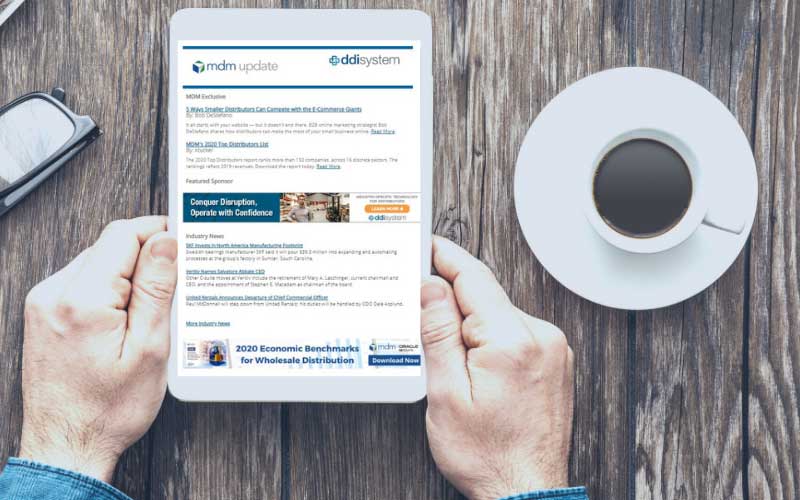In recent years, the world has shifted under our feet. The intensive service requirements of our core customers are now often taken for granted. The partnerships we used to enjoy with our most sophisticated customers have, in some cases, turned into an ugly game of “gotcha.” This contentious new dynamic has been fueled, in part, by an aggressive group of contingency based consulting firms that have wedged themselves between distributors and our customers. And their weapon of choice is the contract pricing audit.
The new purchasing department value creation technique is to open up years of past transactions to look for accidental and often inconsequential billing errors. When these errors are found, the error rate is assumed to apply to the entire amount billed over the life of the contract and a chargeback for pricing noncompliance is issued to the distributor. Most of us wrongly assumed that the purpose of review provisions hidden in the contract terms and conditions were to protect the customer from unscrupulous price gougers.
For most of my years working in distribution, I never saw requests related to pricing audit provisions. About five years ago, that changed. I was notified of a complete pricing review on a 3-year-old contract in the final months of its term. These reviews started as a trickle but grew to a gushing torrent as notifications from more customers were received. The consulting firms had found a new revenue stream: distributor pricing errors magnified by pricing audit terms. Within a couple of years, large distributors had to add staff to deal with the flood of reviews.
It has become standard procedure to call for an audit in the months before a contract renewal. The leverage swings even more in the buyer’s favor as they troll through years of transactions looking for a perceived pattern of pricing non-compliance. In spite of jumping through hoops to cover our customers’ poor planning and emergencies, our value to them has been reduced to one number: the amount of a chargeback for pricing errors based on a few sample transactions.
By not challenging the audit provisions of customer contracts, we have left ourselves open to this kind of second guessing. Distributors need to meet this evolving threat head-on before these tactics go “down market” and become a tool every customer, even the small ones, uses as a leverage amplifier at renewal anniversaries.
There are a few simple strategies that can mitigate the risk of a large chargeback from a strategic customer.
1. Challenge the “look-back” period. It is dangerous to give any customer an open-ended time frame to look for errors. Forcing pricing challenges into the months right after the transactions are created requires the customer to keep up-to-date in their invoice processing and do their own real-time auditing of pricing. A 90- to 120-day window should be sufficient. This provides the customer ample time to conduct a thorough review.
If there is a challenge, it should occur when everyone’s memory is fresh and before people intimately involved in the contested orders have moved on, retired or even passed away. It will also force adjustments to be taken in the period they have affected both the buyer and the seller, allowing for more accurate financial reporting. Fresh memories, as well as constant review and adjustments, should go a long way in minimizing the impact of pricing audits.
2. Define the minimum sample size for an audit in the terms and conditions of the contract. Specify a very large sample spread across many different periods. Customers often give themselves carte blanche in the technique they can use to conduct a pricing noncompliance audit. They rarely review every invoice, instead relying on the old state sales tax auditor’s method of drawing a very small sample and then extrapolating their findings on these few transactions across years of business. For instance, I have seen a $70 error used to justify a $25,000 chargeback.
Additionally, be very wary of an audit plan that allows picking sample transactions from months of significant volatility. When costs are rapidly changing, it is impossible to guarantee strict adherence to a high-transaction count, multi-product pricing agreement. Maintaining accurate costing data requires state-of-the-art IT systems, an incredibly diligent purchasing team and sufficient time to make system changes. Mistakes are inevitable; large sample sizes dampen their impact.
3. In cost-plus contracts, don’t agree to a sample transaction-based audit. Measuring profitability at the transaction level in a cost-plus deal is a trap waiting to catch the distributor. As mentioned before, in periods of product cost volatility, it is likely your cost of goods sold will lag the market, because you sell out of your inventory first. Price increases are likely to be ahead of the expected changes in cost, causing you to show a greater-than-agreed-to gross margin rate. LIFO, FIFO and average cost inventory models will each have a different effect on your GMR in these circumstances. Agreements of this type should measure your overall GMR for a period, such as a quarter or preferably a year. This method allows costs and price to sync up after a sudden market swing.
4. There is no substitute for meeting regularly with your important customers’ purchasing and contracting teams to discuss performance and compliance. Bring your own report showing your aggregate cost for a period and your aggregate revenue. Present cost savings based on substitution or consolidation, as well. Be transparent and self-correcting. This sort of good faith reporting builds trust and confidence. In truly strategic arrangements it is much better to be ahead of a problem than behind it.
Beatty D’Alessandro is the managing partner for BCDN Advisors, a consulting firm focused on distribution company transformations. Before starting BCDN Advisors, Beatty spent 32 years working for 2 Fortune 500 distributors as the CFO, CIO and corporate strategist.


